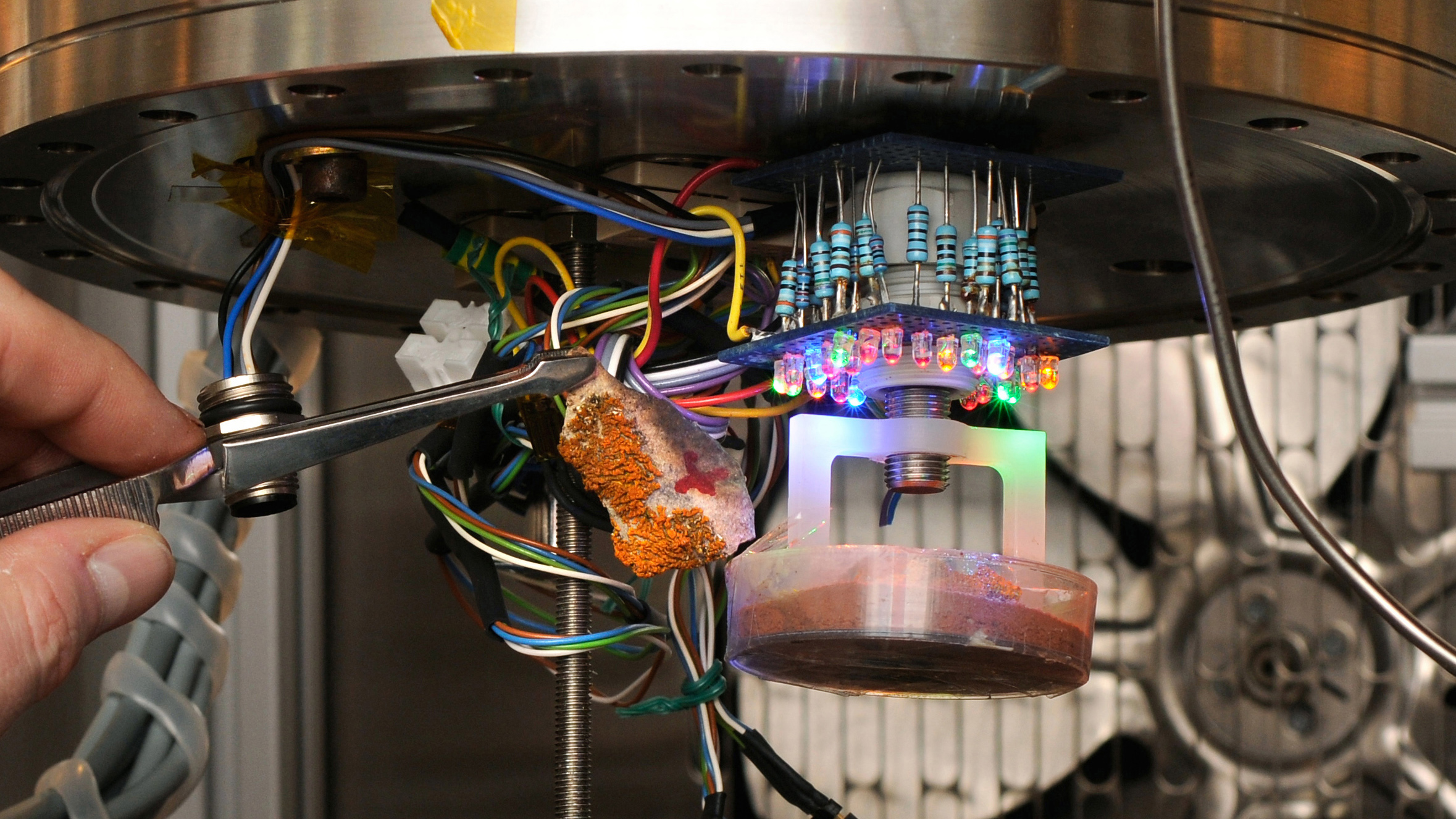Mars jar on:
[Wikipedia]
[Google]
[Amazon]
 A Mars jar or Mars simulation chamber is a container that simulates the atmosphere of the planet Mars. It is used in
A Mars jar or Mars simulation chamber is a container that simulates the atmosphere of the planet Mars. It is used in
 The concept and the name "Mars jar" originate with
The concept and the name "Mars jar" originate with
 A Mars jar or Mars simulation chamber is a container that simulates the atmosphere of the planet Mars. It is used in
A Mars jar or Mars simulation chamber is a container that simulates the atmosphere of the planet Mars. It is used in astrobiology
Astrobiology, and the related field of exobiology, is an interdisciplinary scientific field that studies the origins, early evolution, distribution, and future of life in the universe. Astrobiology is the multidisciplinary field that investig ...
experiments to determine what kind of life on Mars
The possibility of life on Mars is a subject of interest in astrobiology due to the planet's proximity and similarities to Earth. To date, no proof of past or present life has been found on Mars. Cumulative evidence suggests that during the ...
might be viable.
Features
Mars jars have evolved from simple glass containers that resembled kitchen jars in the 1950s to sophisticated temperature-controlledpressure vessels
A pressure vessel is a container designed to hold gases or liquids at a pressure substantially different from the ambient pressure.
Construction methods and materials may be chosen to suit the pressure application, and will depend on the size o ...
that are now more commonly called "Mars environmental simulation chamber" or "Mars atmosphere simulation chamber". In such devices, a variety of aspects of the Martian environment can be replicated, such as atmospheric composition and pressure, surface materials, temperature cycles and solar radiation.
History
 The concept and the name "Mars jar" originate with
The concept and the name "Mars jar" originate with Hubertus Strughold
Hubertus Strughold (June 15, 1898 – September 25, 1986) was a German-born physiologist and prominent medical researcher. Beginning in 1935 he served as chief of aeromedical research for Hermann Göring's Ministry of Aviation, holding this posi ...
, a German physiologist and pioneering space medicine researcher. Strughold described Mars jars in his 1953 publication ''The Green and Red Planet: A Physiological Study of the Possibility of Life on Mars'', in which he also coined the term "astrobiology". By 1956, Mars jars were part of U.S. Air Force research projects into crewed Mars missions.
The concept was popularized outside military circles in 1957 by the biologist Joshua Lederberg
Joshua () or Yehoshua ( ''Yəhōšuaʿ'', Tiberian: ''Yŏhōšuaʿ,'' lit. 'Yahweh is salvation') ''Yēšūaʿ''; syr, ܝܫܘܥ ܒܪ ܢܘܢ ''Yəšūʿ bar Nōn''; el, Ἰησοῦς, ar , يُوشَعُ ٱبْنُ نُونٍ '' Yūšaʿ ...
, who proposed it to NASA leaders, and then by the astrophysicist and science educator Carl Sagan
Carl Edward Sagan (; ; November 9, 1934December 20, 1996) was an American astronomer, planetary scientist, cosmologist, astrophysicist, astrobiologist, author, and science communicator. His best known scientific contribution is research on ext ...
, who featured Mars jars in his TV shows. According to the science historian Jordan Bimm, Strughold's work was not mentioned in later descriptions of Mars jars because civilian scientists wanted to avoid association with the military and with Strughold's involvement in human experimentation in Nazi Germany.
References